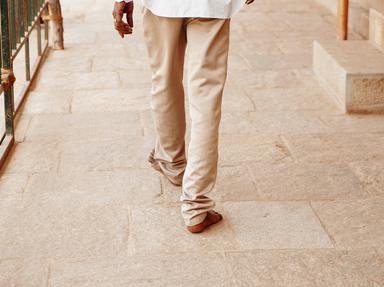Quiz Answer Key and Fun Facts
1. In the original "Star Trek" (TV and movies), why does Captain James T. Kirk call Chief Medical Officer Leonard H. McCoy "Bones"?
2. "Bones" is the colloquial term for the objects necessary to play which of the following games?
3. In English literature from the 19th century on, a person may be described as a "rag and bone man." To what does that refer?
4. Over 4000 unused aircraft are kept by the 309th Aerospace Maintenance and Regeneration Group at Davis-Monthan AFB, Tucson, Arizona, at a place called "The Boneyard." What was the original meaning of "boneyard"?
5. The oddly-named Bobby Bones (b. 1980) is a public figure in the US. What occupation was the basis for his fame?
6. What sort of impact is described by a "T-Bone" automobile accident?
7. How did the television-series character Dr. Temperance Brennan get her nickname which is also the name of the show?
8. American jazzman Scatman Crothers (1910-1986), who played both the guitar and the drums, also played the bones. What are "the bones"?
9. Jeffrey Bones appears in a series of books by children's author David A. Adler. What's special about Jeffrey Bones?
10. In American minstrelsy, what was the role of Mister Bones?
11. In Mario Puzo's "The Godfather" (1969), Moe Green says, "I made my bones when you were going out with cheerleaders!" What does it mean to make one's bones?
12. Ellis Peters' "A Morbid Taste for Bones" is the first of a series of mystery novels set in the 12th century. Who is the protagonist of these stories?
13. Jay Buhner played professional baseball for the New York Yankees and the Seattle Mariners. How did he get his nickname "Bone"?
14. If a person (or other animal) is described as "skin and bones," what can properly be said about them?
15. A skull and crossbones (sometimes called a death's head) is a common symbol. For which of the following does it NOT stand?
Source: Author
FatherSteve
This quiz was reviewed by FunTrivia editor
agony before going online.
Any errors found in FunTrivia content are routinely corrected through our feedback system.
